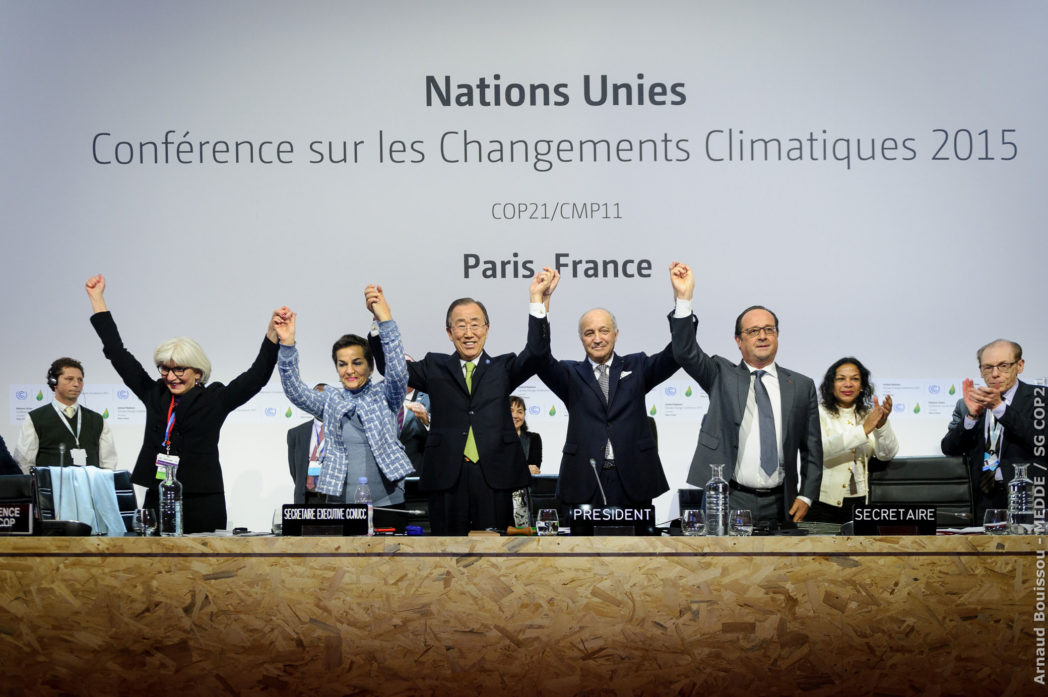It is a rare situation in which half a degree means so much to humanity. Our choices may mean the difference between having only 186 instead of 195 nations on the planet. An Alliance of Small Island States (39 States) are all worried about the consequences of climate change.
The announcement of the Norwegian National Budget proposal on 8 October is an important event. But on the same day this year, the IPCC will publish a report that is far more important.
This is the report that will tell us what has to be done to achieve the targets set out in the Paris Agreement to limit increases in the Earth’s temperature down towards 1.5 degrees above pre-industrial levels. Is it at all possible to achieve this target? How can it be achieved? What is the difference between a 1.5- and a 2-degree target? Let’s look at the evidence.
Imagine you are the head of government
Imagine that you are the head of government in one of the 39 small island nations located in the Pacific Ocean, close to Africa or in the Caribbean. Most of your landmass is between ten and twenty metres above sea level. In Paris in December 2015, these nations succeeded in making amendments to the agreement text that set out an ambition to keep global warming to well under 2 degrees.
Because how is it possible to see these nations signing up to an agreement that would result in the total destruction of their countries? There is no doubt that sea levels are rising: This is happening because water expands as it becomes warmer, and due to the acceleration of the supply of meltwater from snow and ice on the landmasses.
1.5 degrees – find out what it means!
This is why the agreement stated that global warming should be restricted to significantly less than 2 degrees, and closer to 1.5 degrees. Subsequently, the IPCC was assigned the task of finding out what difference it would make to achieve 1.5 instead of 2 degrees of warming, and the probabilities of success.
As is the case for the Norwegian budget, leaks about the content of the IPCC report have started to emerge.
There is a theoretical probability of limiting global warming to 1.5 degrees, but in practice this is impossible given the sluggishness in the system and the lack of political competence. The USA’s abdication in relation to this issue is quite absurd, but very real.
The fact that global emissions volumes increased by about 1.4% last year, instead of levelling out as indicated by the trend in recent years, means that things are not heading in the right direction. We have currently reached about 1 degree of global warming, so the remaining volumes of greenhouse gases that we can afford to emit are very limited.
As if we had plenty of time
At current emissions rates, we are talking about perhaps 10 to 15 years before emissions are such that the 1.5 target will be exceeded. In order to keep global warming below 1.5 degrees, future net emissions must be reduced to zero.
It is clear that this is unrealistic. It is also the reason why the majority of studies address the two-degree target, citing probabilities for success within the range 50 to 80 per cent. The leaks indicate that at today’s emissions rates we will achieve 1.5 degrees of warming in 2040.
The main problem is that we are behaving as if we had plenty of time. We talk about doing things in the right order and that actions must be globally synchronised if our action plans are to be cost-effective. Just take a look at the Norwegian full-scale CCS project, plagued by a succession of delays rooted in such reasoning. And it is far from certain that we have heard the last of this story.
…but what on earth can we do?
If we ignore the pessimistic view, what can we do in practice?
Fortunately, we have economists with the ability to see through crises, and who time after time conclude that it will be much less expensive to take action now than later.
The most recent contribution in this context is the New Climate Economy report published in New York a month ago, which debunks the illusion that “business as usual” is the best approach for the economy. Instead, it points out that the benefits of the green transition are severely underestimated in terms of their contribution to economic growth and wealth creation, and that the impacts of climate change are not taken into account in the “business as usual” mindset.
26 billion dollars
The report points out that globally, there are 26 billion dollars just waiting to be earned by adopting the green transition leading up to 2030. As UN Secretary-General Antonio Guterres said during the launch: “The report shows that actions to mitigate climate change and socio-economic advances are mutually supportive”.
It is important that
- the investments we make in the future are sustainable,
- that we invest in new technologies,
- that we get to grips with the energy transition with the aim of achieving a sustainable future.
There also seems to be no other option than to invest in technologies and systems that bind CO2, and which act to achieve the net removal of CO2 from the atmospheric cycle. Net zero emissions does not mean that that all processes have to adopt zero-emissions targets. However, we do have to remove at least as much CO2 as we continue to emit to the atmosphere. Such measures must be implemented fairly, and in a way that makes it possible to establish a grass roots consensus that enables us to elect politicians with the will and ability to implement these changes beyond their four-year electoral terms.
In any event, I know what my preferred reading will be on 8 October. The Norwegian budget will be a good runner-up. What plans will the Norwegian government have to offer in terms of the environment and climate change mitigation, and will they succeed in discarding the dogma that taking action now will be too expensive? This is the logic of those who don’t calculate the present value of future good and bad investments.
It is rare that a half degree means so much to humanity. This affects us all, and not only the heads of government of island nations elevated just a few tens of metres above sea Level.



Pingback: Parisavtalen: Sjelden har en halv grad betydd så mye for menneskeheten - #SINTEFblogg
Pingback: NCCS - The value of bringing the CCS world together - #SINTEFblog
Pingback: Europe needs to invest more in clean energy research and innovation. The risk is low and the return is high. - #SINTEFblog
Pingback: ELEGANCY Conference 2018 - #SINTEFblog
Pingback: At the COP24 - Are we going to save the planet? - #SINTEFblog
Pingback: The status of biofuels in Norway and around the world, 2022 - #SINTEFblog